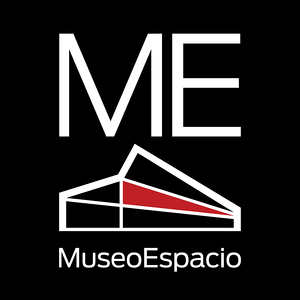November 3, 2016–April 30, 2017
AntiguosTalleres del Ferrocarril, Desarrollo Especial Talleres F.F.C.C.
Av. Ferrocarril Sur S/N
20259 Aguascalientes, Aguascalientes
Mexico
Hours: Wednesday–Monday 11am–8pm
T +52 449 688 4101
museoespacio@meca.gob.mx
Museo Espacio—a new contemporary art museum located in central Mexico—presents Wirikuta (Mexican Time-Slip). Guest curated by Nicolas Bourriaud, the exhibition brings together the work of eight international artists: Peter Buggenhout, Carsten Höller, Marlie Mul, Philippe Parreno, Laure Prouvost, Pamela Rosenkranz, Bosco Sodi and Pascale Marthine Tayou. The museum’s first group show, Wirikuta features existing works in addition to site-specific installations. Nearly all of the featured artists, with the exception of Mexico City-based Sodi, are exhibiting work in Mexico for the first time.
Featuring approximately 50 works, Wirikuta (Mexican Time-Slip) assembles installations, paintings, sculptures, and videos in Museo Espacio’s expansive gallery spaces. Taking inspiration from cultural and literary sources, the exhibition’s title references the natural sacred site and place of pilgrimage in Mexico, Wirikuta, and Phillip K. Dick’s 1964 science fiction novel Martian Time-Slip, in which the author raises the possibility of parallel worlds. The exhibition explores the notion of pilgrimage in an alternate world of shifting geography and altered ecosystems, blurring the boundaries between the industrial and the natural.
Exhibition highlights include a group of Carsten Höller’s larger-than-life “Mushroom” sculptures (2014–15), and Pascale Marthine Tayou’s Plastic Tree (2014–15), an ethereal installation featuring vibrant plastic bags as tree leaves. Also on view are dust-enveloped sculptures of steel beams and concrete fragments from Peter Buggenhout’s “The Blind Leading the Blind” series (2012–14), and Pamela Rosenkranz’s newly created installation of scented sand interspersed with LEDs. Scattered across the floor, Marlie Mul’s site-specific works of resin and sand depict gritty rain puddles littered with trash. Bosco Sodi’s richly layered silver canvases place the earth on the wall, while rock sculptures reminiscent of volcanic lava dot the exhibition’s surreal landscape.
In the introductory gallery space, two video works present differing views of the human age. Philippe Parreno’s dark, apocalyptic environment in C.H.Z. (2012) contrasts Laure Prouvost’s quickly flashing celestial settings in The Swallow (2013). Prouvost’s stark black and white signs featuring whimsical statements are also on view.
Museo Espacio is a part of Macro Espacio para la Cultura y las Artes (MECA)—a vast 200-acre cultural complex located on the historic site of former railway workshops in Aguascalientes. In conjunction with Wirikuta, guest curator Nicolas Bourriaud is engaging local students from the University of the Arts, which is also a part of MECA, to create work responding to the exhibition. Students from various programs, including visual arts, theater, and music, are developing works to be shown in the museum. Bourriaud also participated in Museo Espacio’s inaugural international symposium El Drama de la Forma, in which 14 leading scholars, critics, and curators discussed the current state of the art world.
Wirikuta continues Museo Espacio’s engagement with leading contemporary artists in dialogue with Mexico’s cultural landscape. Recent exhibitions featured large-scale, site-specific installations by Jannis Kounellis (Relámpagos sobre México) and Daniel Buren (Como un juego de niño).
About Wirikuta
A UNESCO-recognized cultural and ecological reserve, Wirikuta is a natural sacred site located in the northern state of San Luis Potosi. The site holds great significance for the Wixarika (also known as Huichols), one of the few indigenous groups in Mexico who have preserved their religious and cultural traditions for centuries. Wirikuta is believed to be the birthplace of the sun and where the various Wixarika communities make their pilgrimage, recreating the route taken by their spiritual ancestors. A part of the greater Chihuahuan Desert, Wirikuta is a unique ecosystem of biodiversity with a large proportion of flora and fauna that is endemic.
About Museo Espacio
Museo Espacio is dedicated to presenting contemporary art in its varying expressions, showcasing leading international artists amidst the vibrant and growing cultural scene of Mexico. Previously home to industrial railway workshops, Museo Espacio houses expansive gallery spaces, a state-of-the-art collections vault, and conservation lab. The museum provides interpretive programs and interactive workshops to foster broader arts education for audiences of all ages. Admission to the museum is free.


